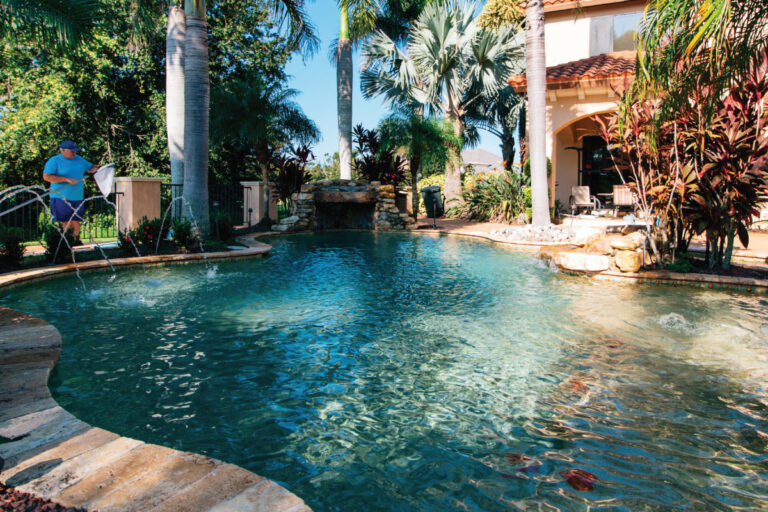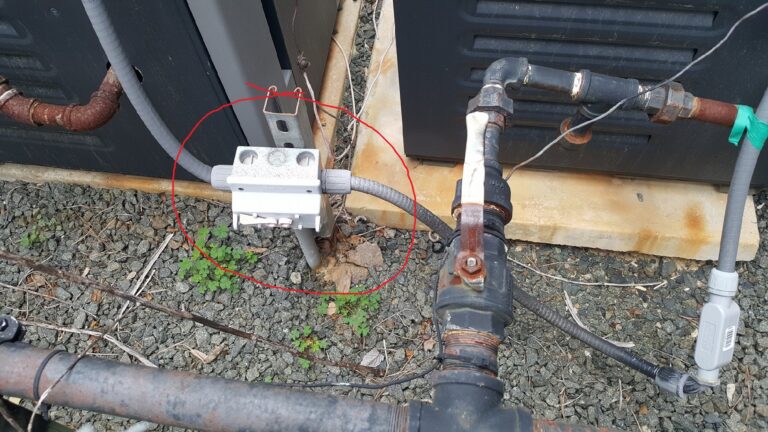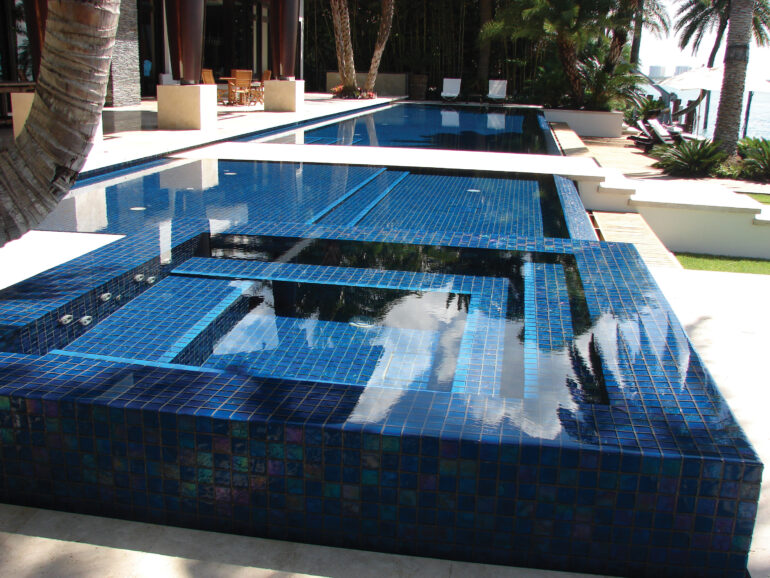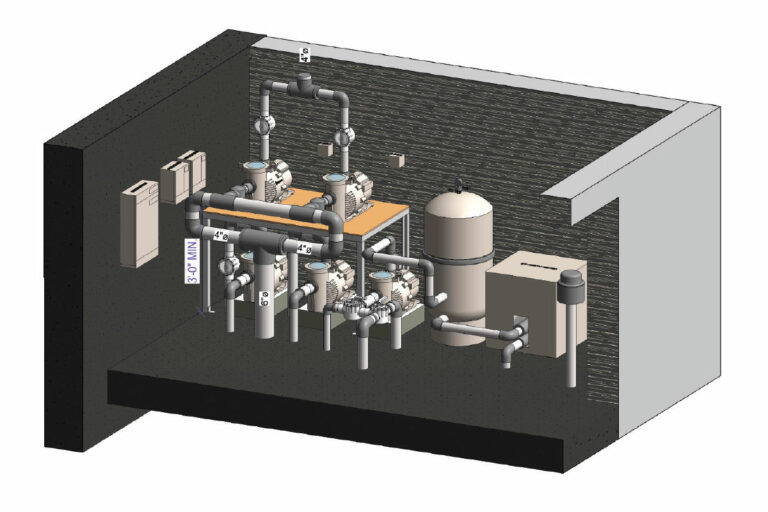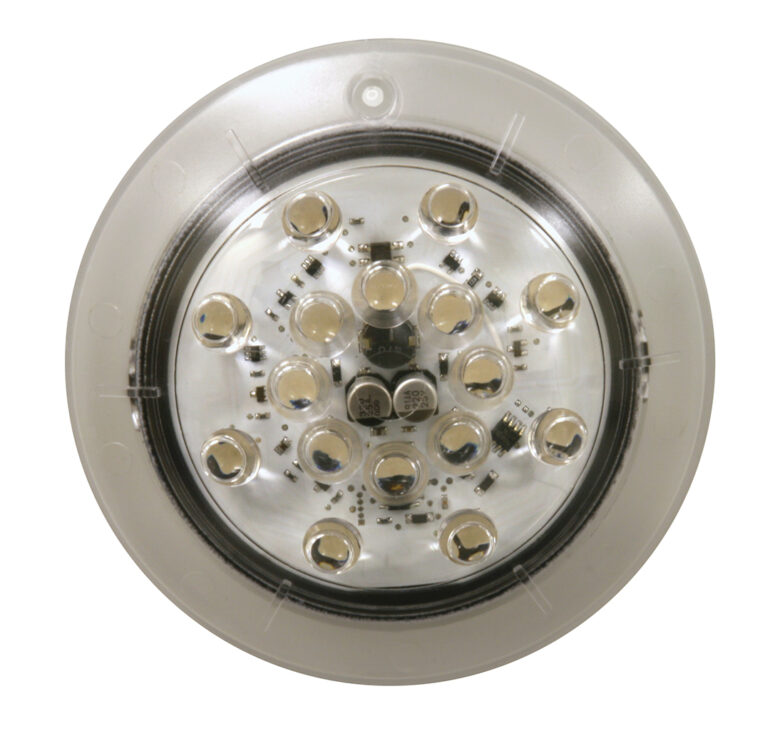Servicing High-End Pools — Hydraulics
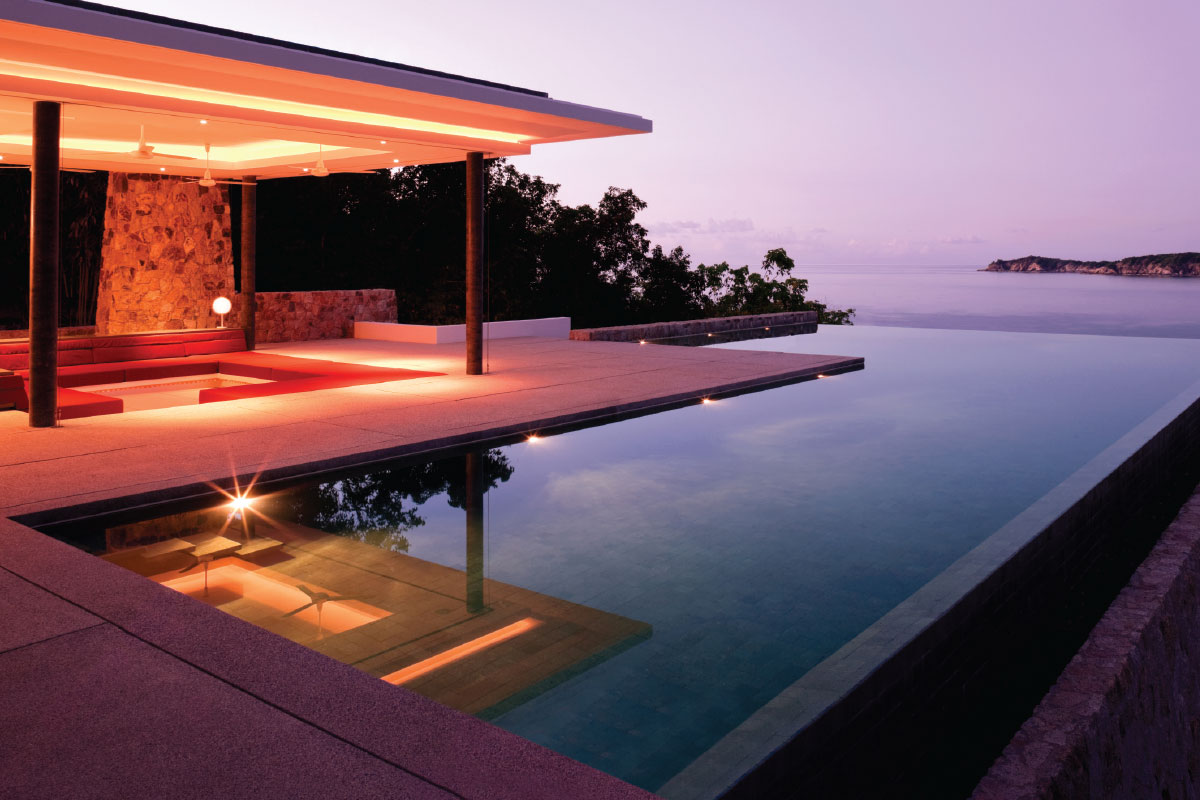
The spillover edges, waterfalls and other goodies that lend luxury to infinity pools and other exotic builds wouldn’t be possible without powerful and precise hydraulic systems. Those systems — like everything else — require maintenance and service, but they’re complex, expensive and potentially intimidating. When you remove the mystique, however, it doesn’t take much for service crews to keep water-moving hydraulic systems in tip-top shape.
Know What Lies Beneath
Paolo Benedetti is the founder of Aquatic Technology Pool & Spa in Morgan Hill, California, and an instructor at Genesis 3 Design Schools. He says the hidden plumbing that does most of the heavy lifting for hydraulic-based features doesn’t need much care at all.
“Once the builders install it, it’s set it and forget it,” Benedetti says.
Set it and forget it, however, doesn’t translate into out of sight, out of mind.
“When bringing on new service people, the first thing is to get them educated and trained on hydraulics, on what’s underground,” Benedetti says. “When they come across these projects for the first time, they’re not going to see all the plumbing and all the things that are hidden and buried under the soil and in the structure, but they should have a basic understanding of how they work.”
Don’t Get Creative With Equipment Changes
The mechanisms that control modern hydraulic systems are installed to meet the specific needs of each pool. There is little wiggle room for improvisation.
“One thing no service provider wants to do is come in and start putting in bigger pumps or smaller filters,” Benedetti says. “Never start changing the parameters of the equipment because all that was taken into consideration during the design phase.”
When customers pressure service teams to make changes based on cost, the best course of action is to become an advocate for the pool.
“If a pump fails and a client says, ‘Well, I want more flow for the waterfall; put in a bigger pump,’ it is not the service provider’s job to do that,” Benedetti says. “It’s their job to explain that it might not work because the plumbing underground might not be adequate for that. If a filter needs to be replaced but the client thinks it’s too expensive, they should articulate that a smaller, cheaper filter could create back pressure on the pump, that the filter could be less efficient or that the filters could get so dirty that they have to be cleaned twice as often.”
Keep Storage Tank Levels Exact
After 40 years of designing aquatic projects across the world, C. Terry Brannon believes he “might be the oldest guy left in the design side of the industry.” A licensed professional engineer and founder of Brannon Corp. Engineering and Consulting in Tyler, Texas, Brannon believes he can guess the likely culprit when he hears about an issue with a hydraulic system.
“When people are having problems with these kinds of pools, it’s usually a water-level issue,” Brannon says. “The pool is all nice and pretty and flat with the water vanishing over the rim or the gutter or the infinity edge. But when people get in, their bodies displace water, it pours over and has to go somewhere. That means [the pool needs to have] a surge tank or collector tank.”
Brannon says a good rule of thumb is three or four gallons of stored water are required per square foot of pool to compensate for both body displacement and turbulence, depending on the specifics. In all cases, however, some water always has to be present for the pumps to work correctly, a fact that is sometimes lost on service crews.
“I see people not keeping the tanks at the proper level,” Brannon says. “They get it too low and the pump sucks air into the system and messes up the priming, disturbs the filter and affects a whole lot of other things.”
On the other hand, overfilling is just as bad and just as common.
“If they overcompensate by filling the tank too much, there’s no surge capacity at all when people get in the water,” Brannon says.
Teaching crews about hydraulic systems, even the plumbing they’ll likely never encounter, is the first step to good service. The real key, however, is strict consistency with builder specifications. It’s almost never a good idea to increase or decrease pump power, filter size or water storage tank levels. Also, the myth that hydraulic systems don’t need any TLC is exactly that: a myth. “The idea that these are maintenance free,” Brannon says, “well, there’s no such thing.”


